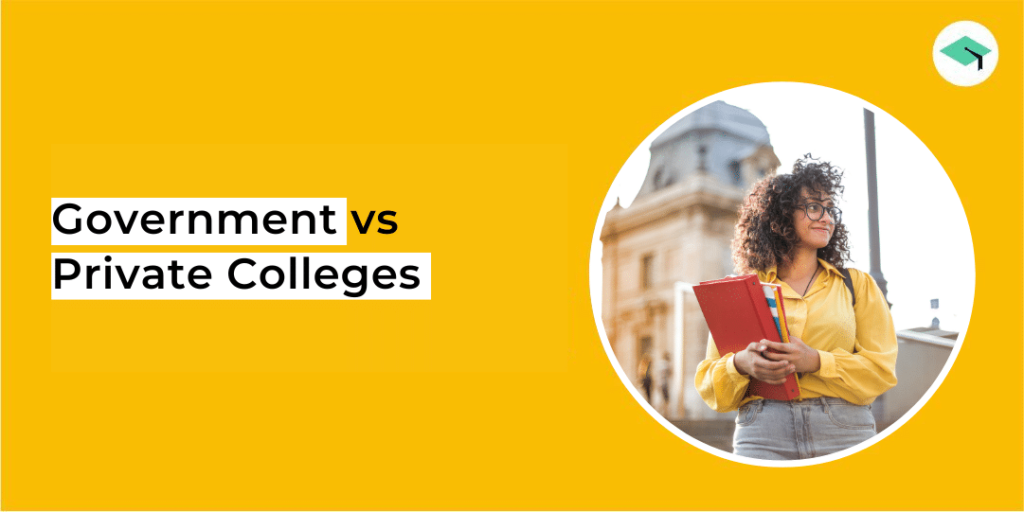Choosing Schools: Private vs. Government

Choosing the right school for your child is a crucial decision that can have a significant impact on their education and future prospects.
In India, parents have the option of choosing between private and government schools, each with its advantages and disadvantages.
In this article, we will explore the factors that parents should consider when choosing between private and government schools in India.
Key Factors to Consider Between Private Schools and Government Schools
1. Quality of Education: The quality of education is a crucial factor to consider when choosing a school. Private schools often have better infrastructure, resources, and experienced teachers, which results in higher academic performance.
However, some government schools like KV, and JNV also provide quality education.
2. Curriculum: Each school has its curriculum, and parents should consider which curriculum aligns with their child’s interests and future aspirations.
Private schools often follow ICSE or international curricula, such as International Baccalaureate (IB) or Cambridge International Examinations, while government schools follow the national curriculum of CBSE.
3. Extracurricular Activities: Private schools often have a wider range of extracurricular activities, including sports, music, drama, and other hobbies.
Government schools may have limited extracurricular activities, but they often have sports facilities and playgrounds.
4. Medium of Instruction: Private schools often use English as the primary language of instruction, while government schools may use the local language.
Parents should consider which medium of instruction is best for their child’s education and future prospects.
5. Location: Private schools are more prevalent in urban areas, while government schools are often located in rural areas.
Parents should consider the location of the schools and how easy it will be for their children to commute.
6. Affordability: Private schools are often expensive, and parents should consider whether they can afford the fees and other costs associated with private education.
Government schools are free up to the age of 14 under the Right to Education Act, but parents may still need to pay for uniforms, textbooks, and other supplies.
7. Competitive Exam Preparation: In India, students often require extra coaching for competitive exams such as the Joint Entrance Exam (JEE) and the National Eligibility cum Entrance Test (NEET).
Parents should factor in these additional expenses when considering the overall cost of their child’s education.
Cost and Expense for Private and Government Schools in India
Private schools in India are known for their high fees, which can range from a few thousand rupees to several lakhs per year.
According to the National Sample Survey Office (NSSO), the average annual expenditure per student in a private primary school was Rs. 13,997 in 2014, four times higher than the expenditure per student in a government school.
Private schools often charge additional fees for extracurricular activities, transportation, and other facilities, which can add up quickly.
In contrast, government schools are free up to the age of 14 under the Right to Education Act. However, parents may still need to pay for uniforms, textbooks, and other supplies.
The average annual expenditure per student in a government primary school was Rs. 3,176 in 2014, according to the NSSO report.

Private Colleges vs Government Colleges in India
Admission Process for Private and Government Schools in India
The admission process for private and government schools differs significantly. Private schools often have a rigorous admission process, requiring parents to submit an application, pay an application fee, and attend an interview. Some schools also require students to take an entrance exam.
Government schools, on the other hand, have a more straightforward admission process. Parents need to provide proof of their child’s age, residence, and caste category, if applicable.
Most government schools admit students on a first-come, first-served basis, and admission is open to all students up to the age of 14.
Balancing School and Coaching
In addition to the factors mentioned above, parents must also consider the workload of their child’s school and coaching classes.
Private schools often have longer school hours and more homework, which can be challenging to balance with coaching classes.
Parents should carefully consider the timing of their child’s school and coaching classes to ensure that they have enough time for both.
Choosing between private and government schools in India is a complex decision that depends on several factors, including the family’s financial situation, the quality of education, and the school’s location and infrastructure.
While private schools offer better facilities and resources, they are also more expensive than government schools. Government schools, on the other hand, are free up to the age of 14, but the quality of education can vary widely.
Ultimately, parents should carefully consider their options and choose the school that is best for their child’s needs and future prospects.
By factoring in the quality of education, curriculum, extracurricular activities, medium of instruction, location, affordability, and competitive exam preparation, parents can make an informed decision about their child’s education.
It’s also important to keep in mind the workload of school and coaching classes to ensure that children have a balanced life.
Parents should plan the finances required for coaching classes and factor in the school timing to avoid any undue stress on their child.
Conclusion
Choosing the right school for your child is a significant decision that can have long-term effects on their education and future prospects
By considering all the necessary factors and weighing the pros and cons of private and government schools in India, parents can choose the best fit for their children and set them on a path to success.
recommended reading
10 Benefits of Studying in Canada!
10 Reasons Why You Should Study in the USA
11 reasons to study in Australia
4 essential tips on investing in your child's education
4 Reasons why you should have an EduFund
5 Reasons why Global Education is the Best for Indian Students
5 reasons why your child's college education is at stake
5 steps to apply for art school admission
5 ways to deal with rising college fees for your child!














